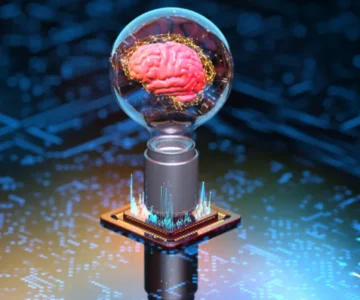As artificial intelligence (AI) continues to advance, it’s crucial to understand the different types of AI and how they function. Two key terms that often come up in discussions about AI are Generative AI and Agentic AI. While both fall under the broad umbrella of AI, they serve very different purposes and have distinct capabilities. In this article, we will explore the differences between these two forms of AI, their applications, and how they impact various industries.
What is Generative AI?
Generative AI refers to AI systems that are designed to create new content. This could include generating text, images, music, and even videos. These models rely on vast datasets to identify patterns and generate outputs based on that information. Generative AI is often used in creative fields, where its ability to simulate human creativity can be harnessed for a wide range of applications.
Key Characteristics of Generative AI:
- Content Creation: Generative AI excels at creating coherent, contextually relevant content. For instance, OpenAI’s GPT can draft essays, answer questions, and create chatbots capable of engaging in natural conversation.
- Data Synthesis: This AI can combine existing data in novel ways. Tools like DALL-E, for example, can generate images based on text descriptions, blending styles and elements in creative ways.
- Adaptability: Generative AI systems can improve their outputs based on feedback, allowing them to refine their performance over time.
- Wide Range of Applications: From art generation to automated journalism, generative AI is used in various industries. For example, marketing companies like Jasper leverage AI to create content quickly and efficiently.
Examples of Generative AI:
- OpenAI’s ChatGPT: A versatile tool that can generate text for a wide variety of applications, from answering questions to writing creative stories.
- DALL-E: An AI model that can generate unique images from textual descriptions, offering new creative possibilities for designers and artists.
- Runway ML: A platform for video editing that uses AI to generate creative content and enhance traditional editing processes.
What is Agentic AI?
Agentic AI, in contrast, focuses on decision-making and autonomous action. These AI systems can operate independently within a set environment, making decisions based on their objectives. Unlike generative AI, which is centered on creating content, agentic AI is all about action and interaction with the world.
Key Characteristics of Agentic AI:
- Autonomy: Agentic AI systems can operate independently, making decisions without constant human intervention. They follow pre-set goals and adapt their behavior accordingly.
- Decision-Making: These systems assess their environment, analyze various factors, and make decisions to achieve specific objectives. For instance, a self-driving car uses agentic AI to navigate traffic and make real-time decisions.
- Interactivity: Agentic AI systems interact with their surroundings, collecting data and adjusting their actions based on real-time feedback.
- Applications: Industries like robotics, healthcare, and finance use agentic AI for tasks such as robotic surgery, stock market trading, and optimizing financial portfolios.
Examples of Agentic AI:
- Autonomous Vehicles: Companies like Tesla use agentic AI to power self-driving cars, enabling them to make real-time decisions based on environmental data.
- AI in Healthcare: IBM Watson helps analyze patient data and recommend treatments, showcasing agentic AI’s decision-making capabilities.
- Smart Assistants: Devices like Amazon Alexa use agentic AI to perform tasks like scheduling and controlling smart devices, based on user commands.
Generative AI vs. Agentic AI: A Comparative Overview
The fundamental difference between these two types of AI lies in their purpose: Generative AI is focused on producing content, while agentic AI is focused on taking action and making decisions. This distinction shapes how each AI type is applied across different industries.
- Generative AI in Creative Industries: In sectors like advertising, generative AI is used to create content that resonates with target audiences. By analyzing consumer data, generative models can adapt content to specific demographics, enhancing engagement and boosting sales.
- Agentic AI in Robotics: In manufacturing, agentic AI powers robots that can adjust to production changes in real time, improving efficiency and reducing downtime. These robots learn from their environment and adapt their actions based on current data.
Current Trends in Generative AI and Agentic AI
Trends in Generative AI:
- Deepfake Technology: Generative AI is driving advancements in deepfake technology, creating hyper-realistic videos. While this has entertainment applications, it raises ethical concerns around misinformation, especially in politics and media.
- Text-to-Image Synthesis: Tools like Midjourney allow users to generate images from text prompts, democratizing creativity and enabling people with no artistic background to create art.
- Art and Music Creation: AI-powered tools like AIVA assist musicians and artists in generating new compositions and exploring creative possibilities beyond traditional methods.
- Content Personalization: Businesses are using generative AI to create tailored marketing campaigns, adapting messages to individual preferences and enhancing customer engagement.
Trends in Agentic AI:
- Financial Algorithms: In the financial sector, agentic AI is revolutionizing trading strategies by analyzing market data and executing trades at high speeds. Hedge funds and other financial institutions use AI-driven models to predict market trends and make investment decisions.
- Robotics and Automation: Companies are increasingly adopting agentic AI for tasks requiring precision, such as in warehouse automation and manufacturing. Amazon uses robots in its fulfillment centers to streamline operations and improve productivity.
- Smart Cities: Agentic AI is being integrated into urban infrastructure to optimize traffic management, energy usage, and public safety. Cities like Barcelona are already using AI to improve public services and enhance the quality of life for their residents.
Conclusion
As we continue to explore the exciting advancements in AI, understanding the difference between generative AI and agentic AI is essential. These technologies are not only shaping the present digital landscape but also paving the way for future innovations that will redefine how we interact with machines. Generative AI focuses on content creation, while agentic AI is geared towards autonomous decision-making and action. Both types of AI offer unique benefits and are poised to impact a wide range of industries in transformative ways.





